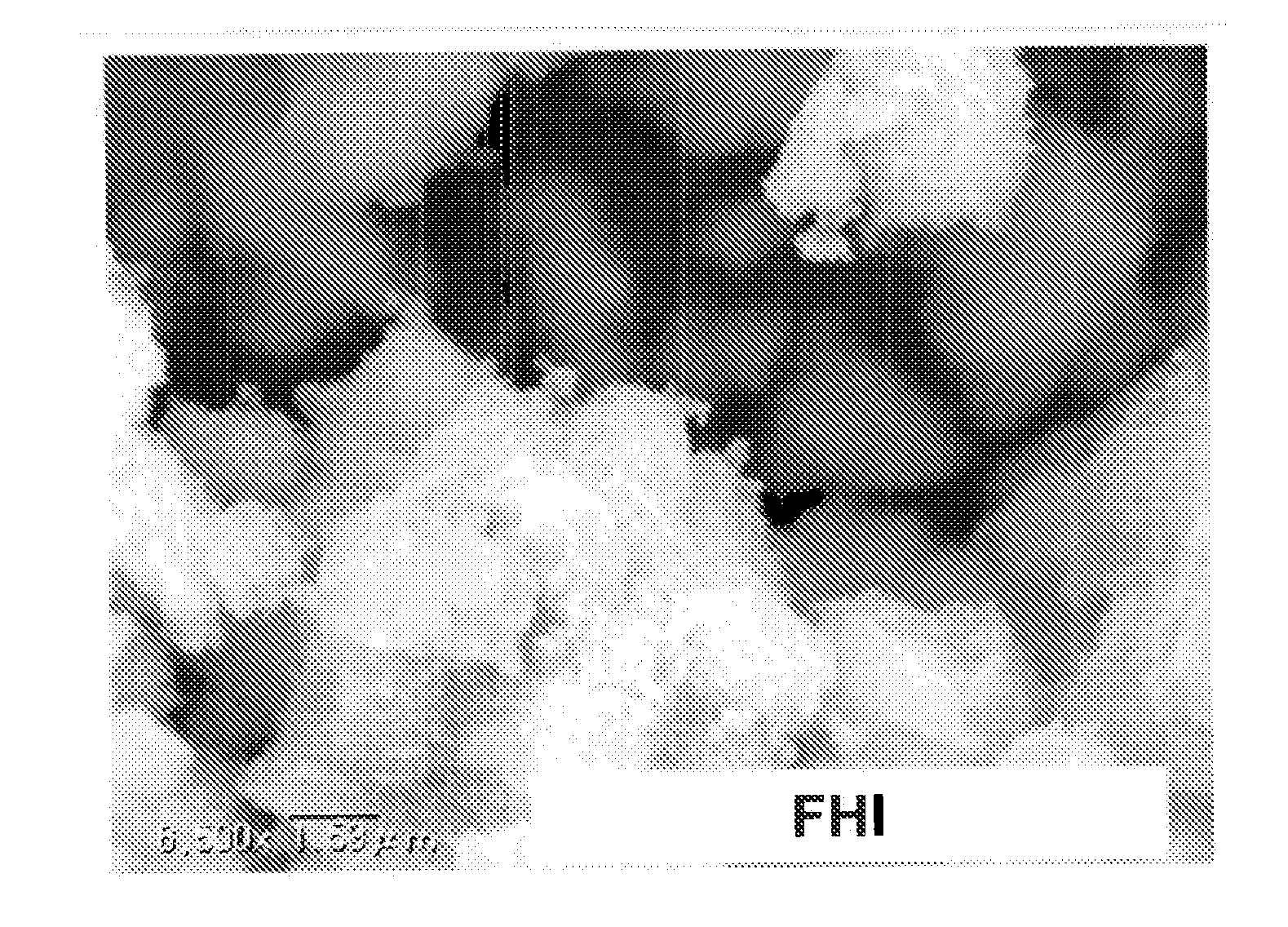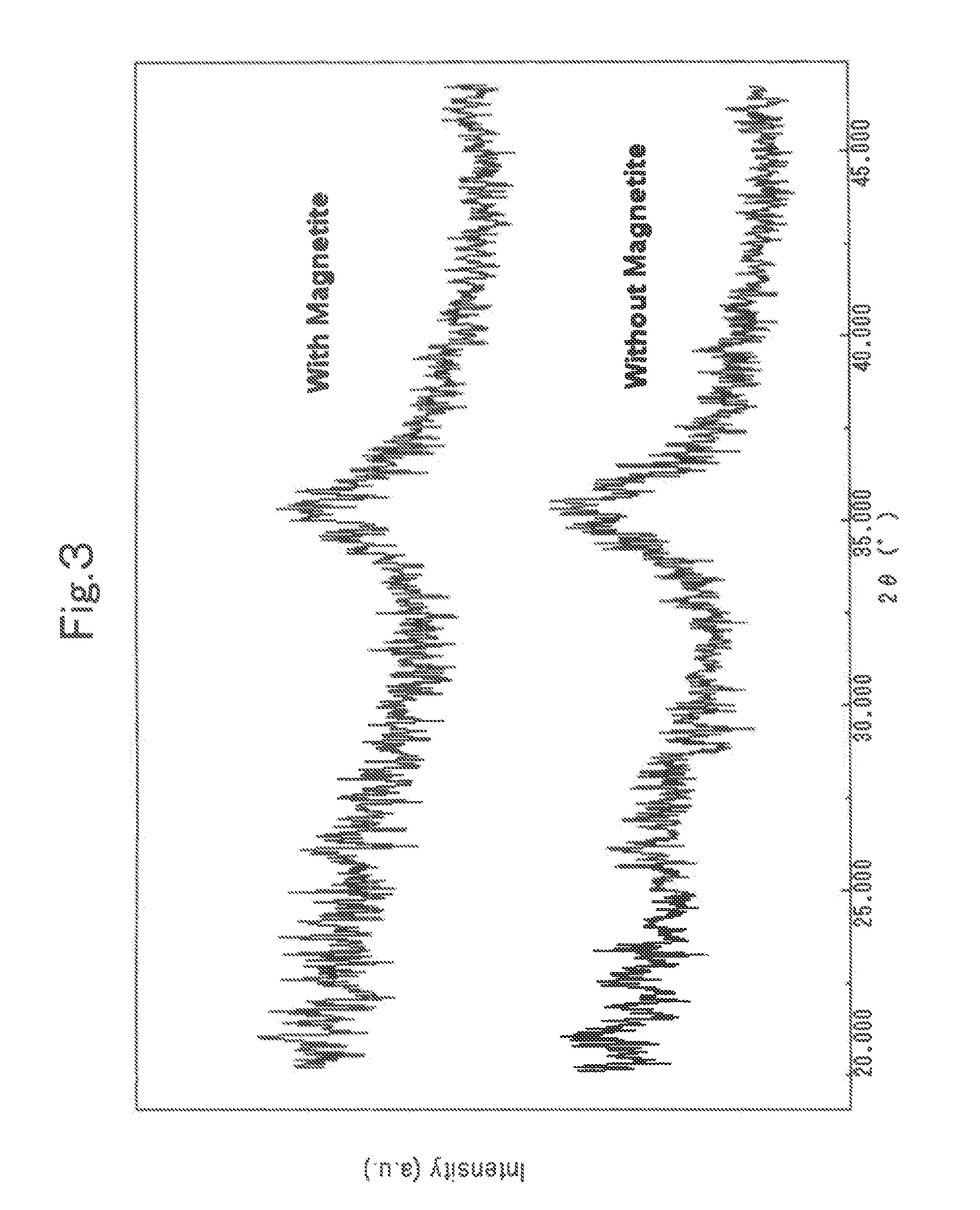Magnetic chemical absorbent, production process for the same and recycling method for the same, as well as waste-liquid treating method
- Summary
- Abstract
- Description
- Claims
- Application Information
AI Technical Summary
Benefits of technology
Problems solved by technology
Method used
Image
Examples
examples
[0093]Hereinafter, the present invention will be explained more concretely by means of examples.
example no.1
Example No. 1
[0094]A magnetic chemical absorbent was produced by means of a production process that will be specified herein after.
[0095]First of all, by means of slowly adding a diluted ammonia aqueous solution to a mixture of ferrous chloride (FeCl2) and ferric chloride (FeCl3) (a molar ratio of FeCl2:FeCl3 was 1:2) and then adjusting them to pH=8, magnetite fine particles whose average particle diameter was 10-100 nm approximately were deposited. And, the magnetite fine particles were subjected to solid-liquid separation by means magnetic separation, and were thereafter washed several times until a pH became 7, thereby making the magnetite fine particles ready.
[0096]Next, an aqueous solution, which was obtained by dissolving about 25-g Fe2(SO4)3.5H2O into 500-mL distilled water, was heated to 60° C., and was then stirred slowly for 10 minutes (a heating step).
[0097]And, into said aqueous solution whose temperature was held at 60° C., a slurry in which said magnetite fine particle...
example no.2
Example No. 2
[0148]An experimental device being illustrated in a schematic diagram of FIG. 14 was made ready. In this experimental device, a glass tube 2 was disposed within an electric field 1 being directed from bottom toward top, and additionally a magnetic filter 3 comprising a ferromagnetic wire was disposed at a position that was within this glass tube 2, and at which the magnetic-field gradient was maximum.
[0149]And, while applying the magnetic field 1 with strengths given in Table 1, a 100-mL waste liquid in which the magnetic chemical absorbent that is directed to Example No. 1 was suspended was flowed into said glass tube 2 from above for 3-4 seconds, and was then passed through the magnetic filter 3 from the top toward the bottom. On this occasion, mass ratios of the magnetic chemical absorbent that could be separated from the waste liquid magnetically were examined. The results are given in Table 1.
[0150]For comparison, the simple-substance schwertmannite that was obtain...
PUM
| Property | Measurement | Unit |
|---|---|---|
| Fraction | aaaaa | aaaaa |
| Magnetic field | aaaaa | aaaaa |
| Dissociation constant | aaaaa | aaaaa |
Abstract
Description
Claims
Application Information
 Login to View More
Login to View More - R&D
- Intellectual Property
- Life Sciences
- Materials
- Tech Scout
- Unparalleled Data Quality
- Higher Quality Content
- 60% Fewer Hallucinations
Browse by: Latest US Patents, China's latest patents, Technical Efficacy Thesaurus, Application Domain, Technology Topic, Popular Technical Reports.
© 2025 PatSnap. All rights reserved.Legal|Privacy policy|Modern Slavery Act Transparency Statement|Sitemap|About US| Contact US: help@patsnap.com



